Castlevania: Lament of Innocence
After a lengthy hiatus, Lament of Innocence marks the return of Castlevania, bringing with it three dimensions. But don't sell it short just yet.
| Version PS2 | Developer Konami | Publisher Konami | Genre Action |
||||
You know, just because Lament has three dimensions doesn't mean the death of the franchise. Koji Igarashi, who worked on Symphony of the Night (considered by many the premiere Castlevania title) was at the helm of the project, along with character designer Ayami Kojima who also worked on SOTN, as well as the GBA offering Aria of Sorrow. So did they again make the same mistakes that the N64 Castlevanias suffered from?
To say that the game lives up to expectations would be an understatement. Lament attempts to incorporate some of the series' greatest aspects, but also adds new features and most obviously a third dimension. What we are presented with in the end is a great looking, playing and sounding action game that should please both fans and newcomers alike. Castlevania has always been special and Lament of Innocence brings the series up to date with style and dignity.
Like all other installments before it, Lament presents the player with a meaty story. It starts with your hero character Leon Belmont chasing desperately after his love, Sara, who has been kidnapped. Naturally this leads Leon to a mysterious forest and a large castle, but first he's introduced to Rinaldo. After discussing his past, Rinaldo gives Leon the whip of alchemy, and hence the vampire hunting begins.
For those ready to make comparisons between Lament and the 'other' 3D Castlevanias for Nintendo 64, get those ideas out of your head now. These two are nearly exact opposites. Imagine a hybrid of Rygar and Devil May Cry with a sprinkling of RPG elements, the combination of fast action and a whip, and you can generally picture how Castlevania works.
The combat is very fluid and tight, offering some of the most precise controls I've experienced lately. This is best experienced in combat, which is based largely on the use of Leon's whip, some cool combos and sub-weapons. While the game does lack a "lock-on" feature, it is never difficult to attack your enemy, and the stationary camera succeeds in making certain you can always see what's going on.
Combos are emphasized above all else in Lament. You start out with a very limited array of combos, but as you become better at performing them you unlock more. While it isn't terribly difficult to get all the combos, more diligent players get them sooner. Lament relies heavily on combat, and the action is constant, enjoyable, and never really gets old because you're always trying to perfect combos and learn new ones.
Of course, it wouldn't be a Castlevania game without sub-weapons. While none of them are new, combining them with one of the seven orbs produces a unique attack. Needless to say the options are very open and each player is certain to have a favorite combination. RPG-style relics, each offering certain abilities and accessories, along with weapons and armor, are also up for grabs.
While the core gameplay mechanics are very action based, there are still elements of exploration and platforming. Much like Symphony of the Night, Lament presents players with a castle to traverse, and a rather large one at that. But instead of having one continuous castle, there's hub from which all five of the worlds are accessed, and all available from the start, which in a small way does limit exploration in the game. Straightforward jumping areas are not found commonly, and the platforming isn't as substantial as the combat - but it does exist, most notably when you're required to use the whip to pass certain rooms.
Castlevania's gameplay is, above all else, super fun. I never got bored of whipping the bad guys senseless, and although the boss fights are a bit elementary, they're entertaining as well. Because of no lock-on feature, there are very occasional issues with attacking but it doesn't hurt the experience much at all. My only real complaint is the central 'hub' concept. Many fans will likely not enjoy this, preferring to earn items and abilities to progress rather than simply having everything from the start. However, there are still plenty of hidden surprises those fans will enjoy unearthing.
Graphically, Castlevania is really pretty. The castle itself is and all its various areas are simply gorgeous. Each area presents its own unique atmosphere, but the darkness or despair of the situation at hand is never lost. Even in the most beautiful areas lurks some kind of rubble, or some aspect that reminds you that evil abounds. Regardless of your taste it's hard to ignore the high quality visuals here - subtleties such as sparks, flames and reflections on the floor all look stylish and make for some great environments and spectacular mood enhancement.
The character designs are exemplary and some of the best the series has seen. Leon's longer blonde hair and knightly uniform fits the Belmont legacy, Rinaldo is a distinctive character fulfilling the role of merchant and informant, whose experience in alchemy and knowledge of vampires is exhibited in his attire as well as his aged look.
Leon, as the main character is very well animated - watching him run towards the camera allows the player to see just how fluid and realistic his movement is. The in-game cinemas also provide fine visuals - Leon's facial expressions are near life-like and his movements during these scenes are just as realistic as during gameplay. Other characters look just as good, with these same life-like expressions and movements.
All the regular enemies are greatly detailed but there aren't really enough of them, and many are simply recycled with new colors or more strength. Enemies and bosses are invariably impressive too; the unique bosses range from enormous to about Leon's size and many of them have multiple animations to suit different attacks. Lament of Innocence is visual splendor and it looks better than the bulk of the PS2's library. Only very rarely does the visual standard fluctuate.
Symphony of the Night offered an amazing musical score, and those wise enough to snap up Lament of Innocence are also in for a treat. Rich orchestral sounds, mixed with some guitar and electronic pulses await - the hybrid of styles provides some of the best audio enjoyment of any action title. The musical score here is certainly comparable to the likes of Final Fantasy and other such epic games.
Each score does a great job of matching the environment - if the level is pristine then expect slower, melodic tunes, while other levels will have more synthesized music to accentuate the action. The last level even includes classic Castlevania music. Sound effects will also go down well - each time you crack your whip you might look around to make sure it isn't real. The voice acting isn't perfect, but by today's standards it's also far from bad - the script is not quite on par with the likes of Final Fantasy but it's still tolerable.
Although Lament of Innocence is quite short at around ten hours, I must say we're enthralled with this latest Castlevania. We have utmost respect for this update and no gamer should be without experiencing it.
| ||||||||||||
|


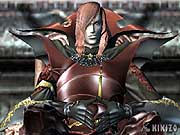
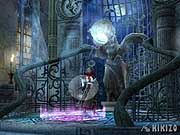

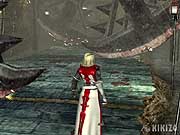


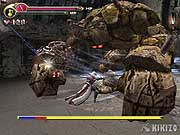
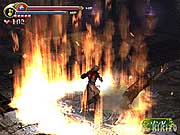
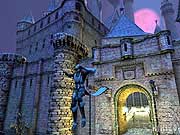

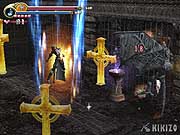
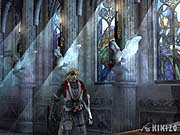
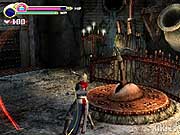
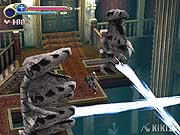
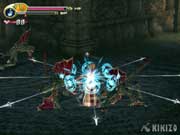

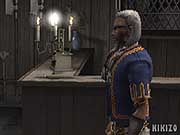
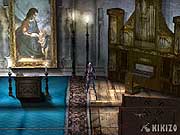
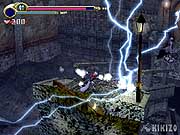
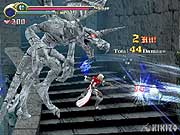
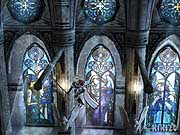




 Satoru Iwata Video Interview - the late Nintendo president spoke with Kikizo in 2004 as 'Nintendo Revolution' loomed.
Satoru Iwata Video Interview - the late Nintendo president spoke with Kikizo in 2004 as 'Nintendo Revolution' loomed. Kaz Hirai Video Interview - the first of Kikizo's interviews with the man who went on to become global head of Sony.
Kaz Hirai Video Interview - the first of Kikizo's interviews with the man who went on to become global head of Sony. Ed Fries Video Interview - one of Xbox's founders discusses an epic journey from Excel to Xbox.
Ed Fries Video Interview - one of Xbox's founders discusses an epic journey from Excel to Xbox. Yu Suzuki, the Kikizo Interview - we spend time with one of gaming's most revered creators.
Yu Suzuki, the Kikizo Interview - we spend time with one of gaming's most revered creators. Tetris - The Making of an Icon: Alexey Pajitnov and Henk Rogers reveal the fascinating story behind Tetris
Tetris - The Making of an Icon: Alexey Pajitnov and Henk Rogers reveal the fascinating story behind Tetris Rare founders, Chris and Tim Stamper - their only interview? Genuinely 'rare' sit down with founders of the legendary studio.
Rare founders, Chris and Tim Stamper - their only interview? Genuinely 'rare' sit down with founders of the legendary studio. The History of First-Person Shooters - a retrospective, from Maze War to Modern Warfare
The History of First-Person Shooters - a retrospective, from Maze War to Modern Warfare